As expected, the week-long truce between Israel and Hamas to allow for prisoner exchanges and the flow of humanitarian aid to reach beleaguered Palestinian civilians has finally faltered. Military operations have resumed in both northern and southern Gaza. What now?
Unsurprisingly, many have called for Israel and Hamas to return as quickly as possible to another truce, even a total ceasefire. While the proposal of an end to the fighting altogether should be simply dismissed out of hand, wisdom might also counsel against even another temporary pause in fighting until the legitimate military aim of destroying Hamas has been accomplished. This is not an easy prospect to suggest. Every Israeli man, woman, and child rescued from Hamas during the recent truce constitutes an inexpressible joy. The days of their release were good days. It was right to be glad in them. So why not do it again?
In all likelihood, Hamas gained enormously from the temporary pause. I don’t point simply to Hamas leveraging the truce in the ways most observers expected them to. They did do that to be sure. They used the opportunity to exit their tunnels with impunity and to regroup and resupply—which was achieved often enough by raiding humanitarian and fuel supplies that were intended to ease the suffering of Palestinian civilians. Hamas took the opportunity to repair damaged or destroyed communication lines between compounds and outposts, improving their command and control. They reconnected avenues for movement by repairing or clearing lanes of travel, tunnels, etc. Worse, they completed, at no risk, detailed surveillance of IDF battlelines, formations, supply routes, outposts, and the like. Most of this was expected. And while it will prolong the fight, it probably won’t alter the ultimate outcome. It would be difficult to suggest, then, that the truce was not worth it. But there is another way by which Hamas benefitted from the truce that likely eclipses even the tangible gains already mentioned.
It’s important, first, to stress that questioning whether prisoner exchanges are prudent is not to question the intrinsic value of the hostages nor to weigh their freedom against political and military ambitions. But it is to observe that the prisoner exchanges—like the paying of any kind of ransom—does nothing to disincentivize further hostage-taking. Whenever deals like these exchanges are struck to make some particular, known, set of Israeli citizens safe, other future unknown Israeli citizens will now face greater future risk.
This danger is compounded by what might prove to be Hamas’ biggest gain from the truce: they were further legitimized. Despite Israel’s stated war aim of eliminating Hamas’ ability to rule the Gaza Strip, the hostage negotiations and prisoner exchanges affirmed Hamas’ rule. It has been insisted that October 7th rendered clear once-and-for-all that the precondition for peace between Israel and the Palestinians is the end of Hamas. But rather than pressing the assertion that Hamas has no role to play in Gaza or Israeli-Palestinian relations any longer, Hamas was instead given the central role. In full military uniform, including their garish headbands, and often surrounded by crowds of Palestinian civilians, they made a festival out of turning over hostages. Absurdly, photographs appear to attest to the claim that the aid trucks, carrying vital humanitarian supplies into Gaza, were allowed to be festooned with large banners celebrating Hamas, complete with images of Hamas leadership. On top of it all, there are indications that Hamas’ popularity in the West Bank is growing.
This is why it time, now, for Israel to focus decisively on those necessary actions which are required to destroy Hamas. But, while legitimate, this aspiration probably requires a bit of nuance. Hamas is something more than simply the bodies and materiel that make up the criminal network and that resource it. To be sure, the material element of Hamas, especially its fighting arm, the Qassam Brigade, can, in principle, be closed with and killed; at least to the degree that it is no longer capable of posing any serious threat to Israel. Sewn as it is into the very fabric of Palestinian community life, the task of cutting away the cancer of Hamas will be difficult to do in ways that limit harm to the innocent. But Israel has been committed to doing this and it will—and must—remain so.
This is vital, because behind the material aspect of Hamas is an ideology. Unlike its foot soldiers, the ideas behind Hamas are rather harder to kill with a gun. Israel has to fight in such a way that it allows the best possible chance of killing the idea of Hamas in the Palestinian mind. Through fighting with as much proportionality and discrimination as it can—while remaining committed to the decisive pursuit of its legitimate war aims—Israel has some chance of making the case that the restoration of order, justice, and, someday, peace in Gaza must begin with the end of Hamas. In a follow up post, I will explore what some of this might look like.
In the meanwhile, the question of whether Israel should pursue another ceasefire might be moot. In a preening demonstration of his own self-regard, Saleh al-Arouri, a senior Hamas leader and founding commander of its miliary wing, insisted in a recent interview with Al-Jazeera that no more hostages will be released until the war is over. “The official and final position of the Hamas movement,” he proclaimed, “…is that there will be no more prisoner swaps before the end of the aggression, and before there is a final and complete ceasefire.”
Until and unless Hamas is so crippled that they are willing to return all the hostages in return for some small concession Israel finds acceptable, Israel should accept al-Arouri’s conditions. No more ceasefires, no more truces. Israel must finish this.
And then arrange the release of the hostages with the new leadership in Gaza.

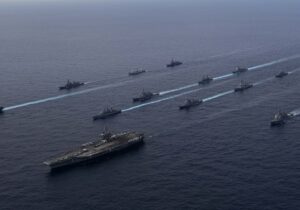
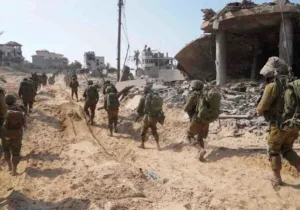
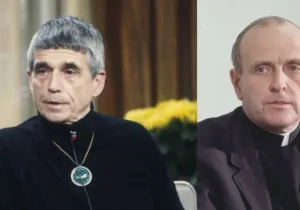
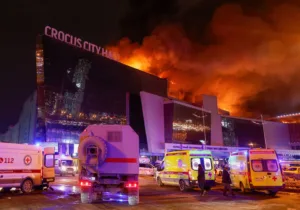
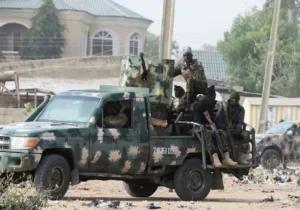

 Sponsor a student for Christianity & National Security 2024
Sponsor a student for Christianity & National Security 2024